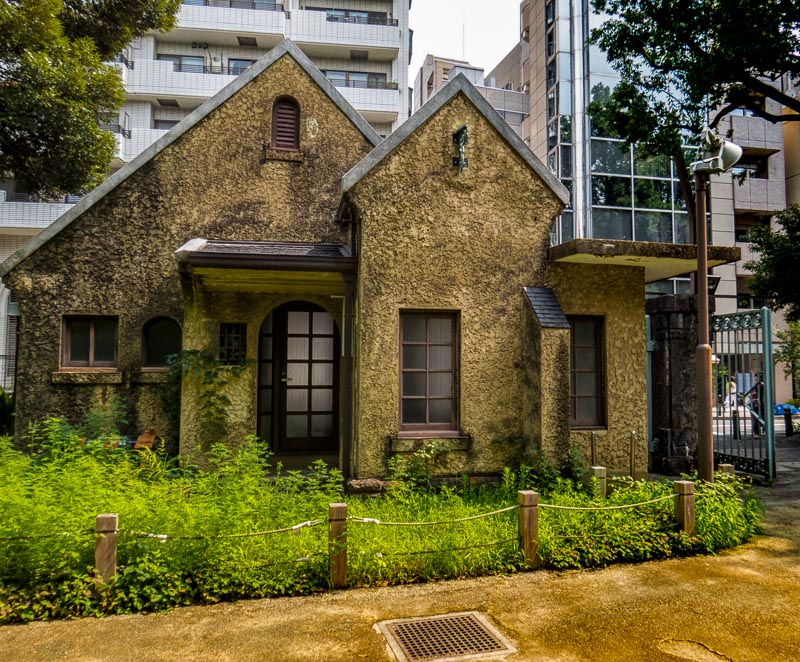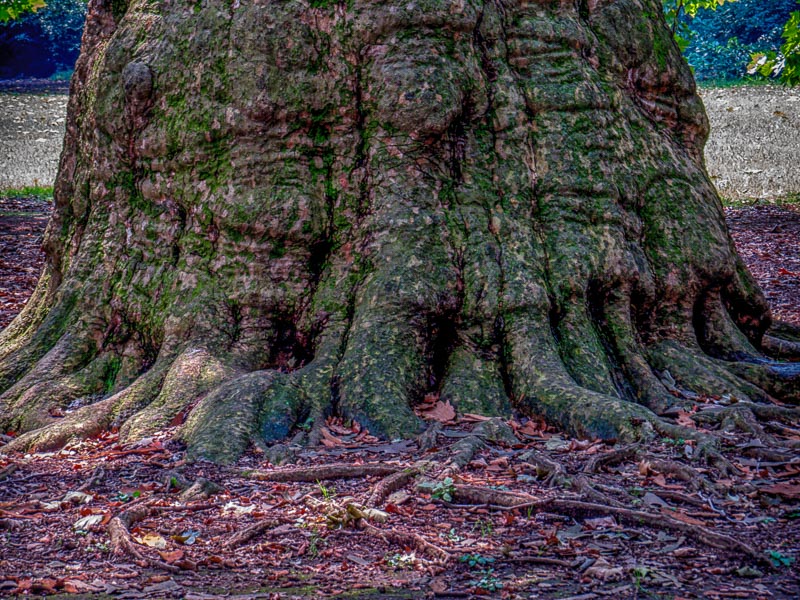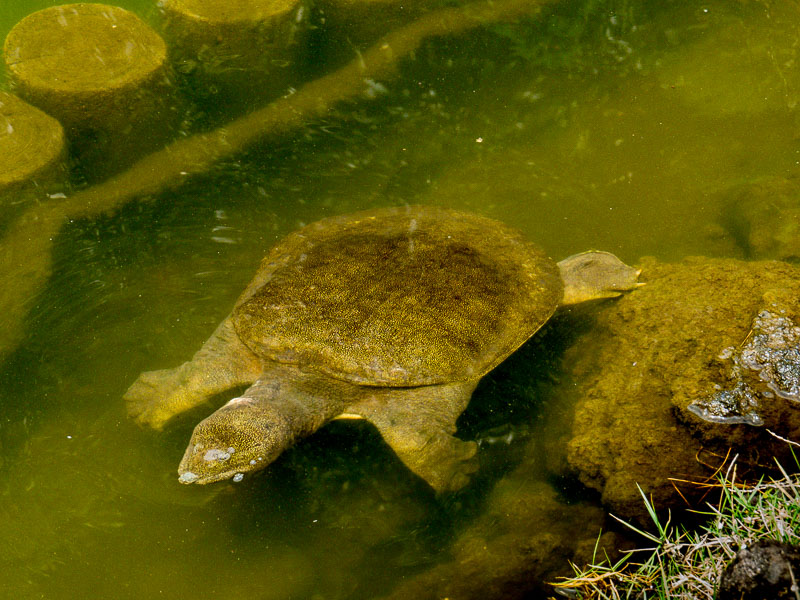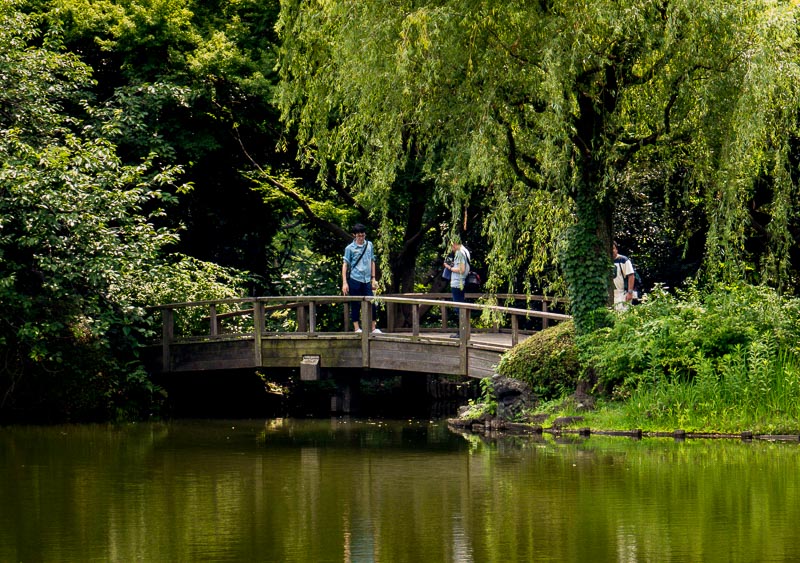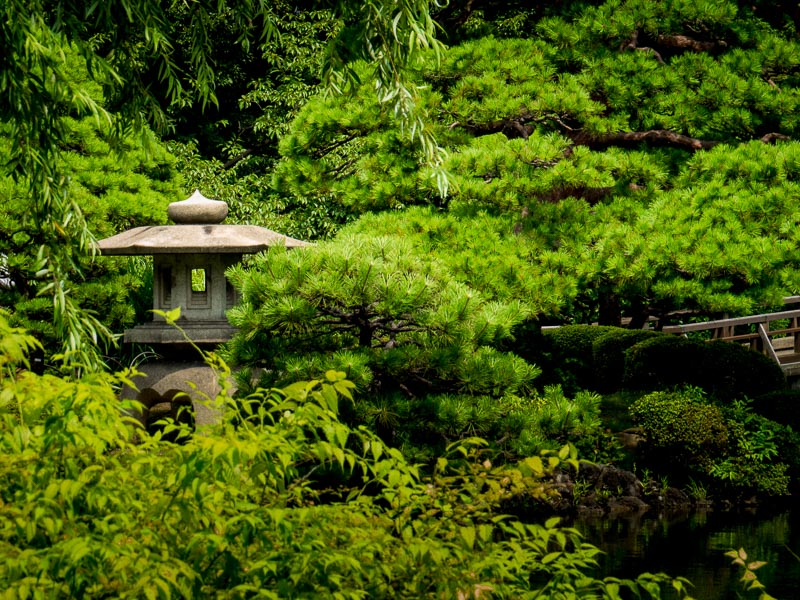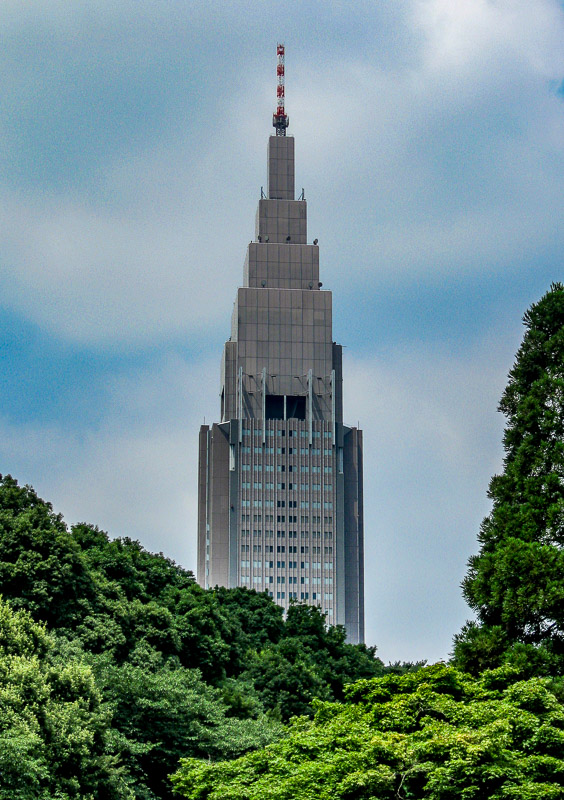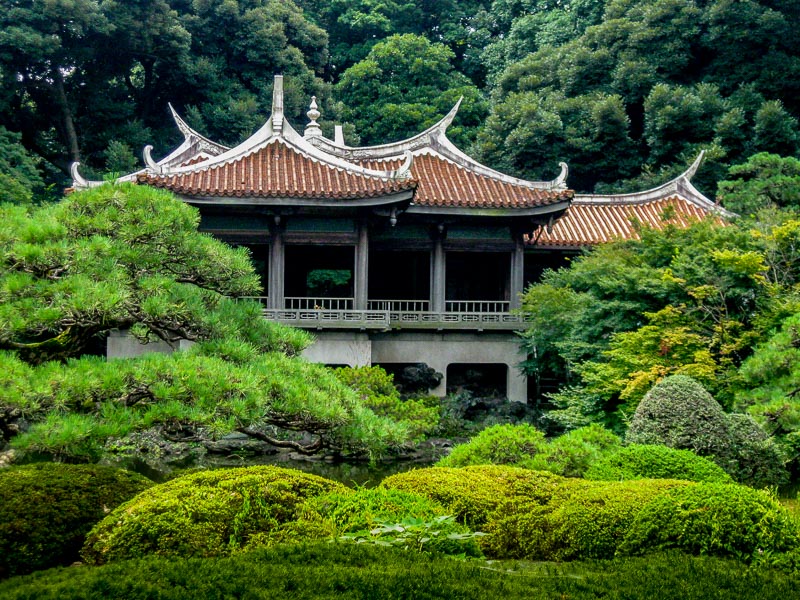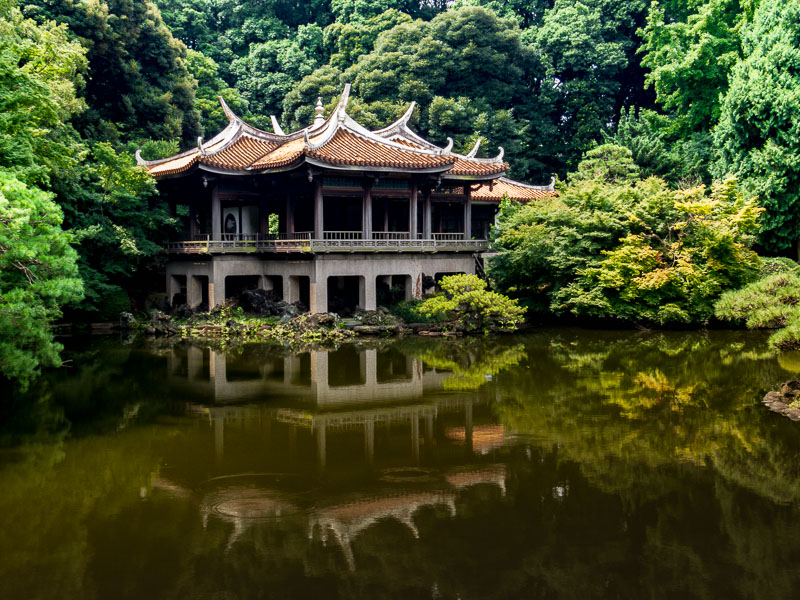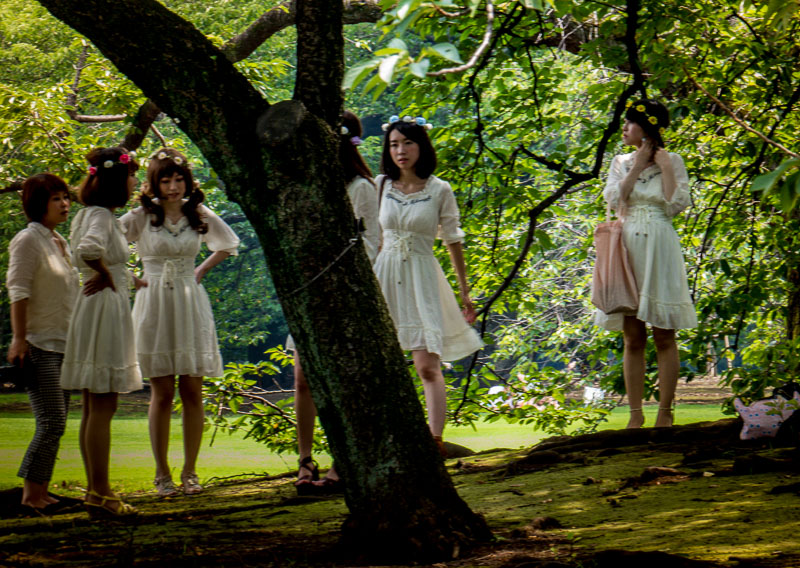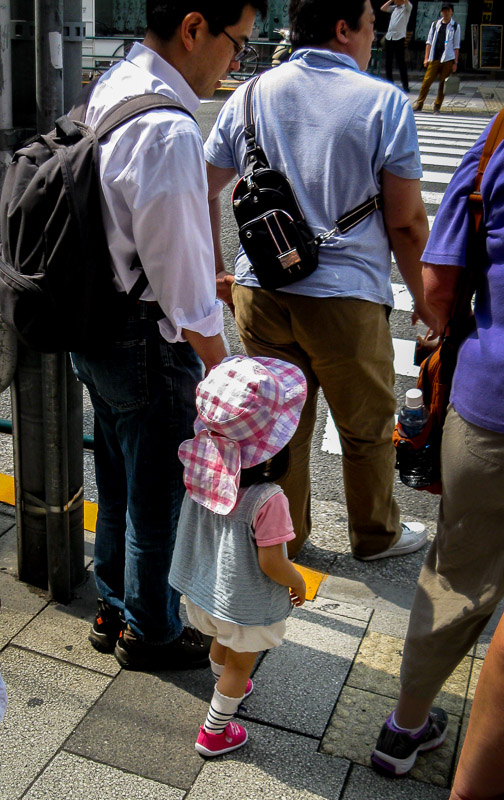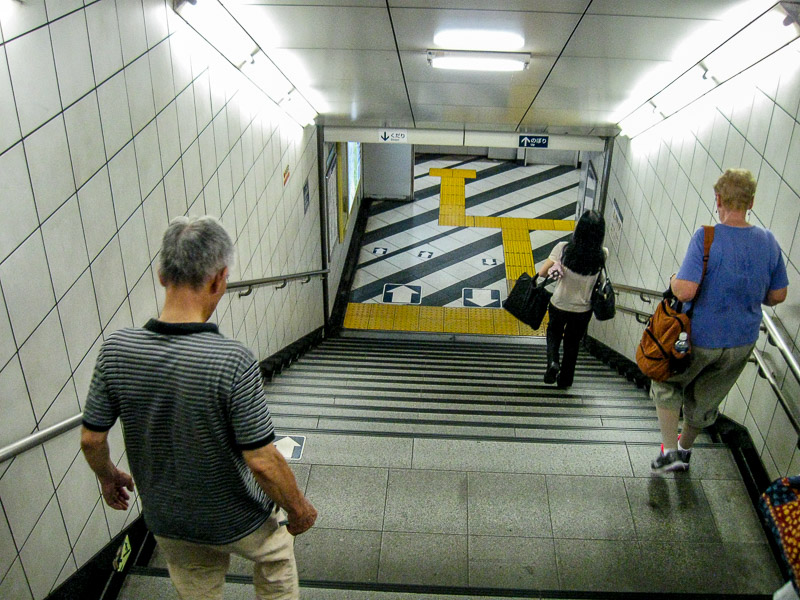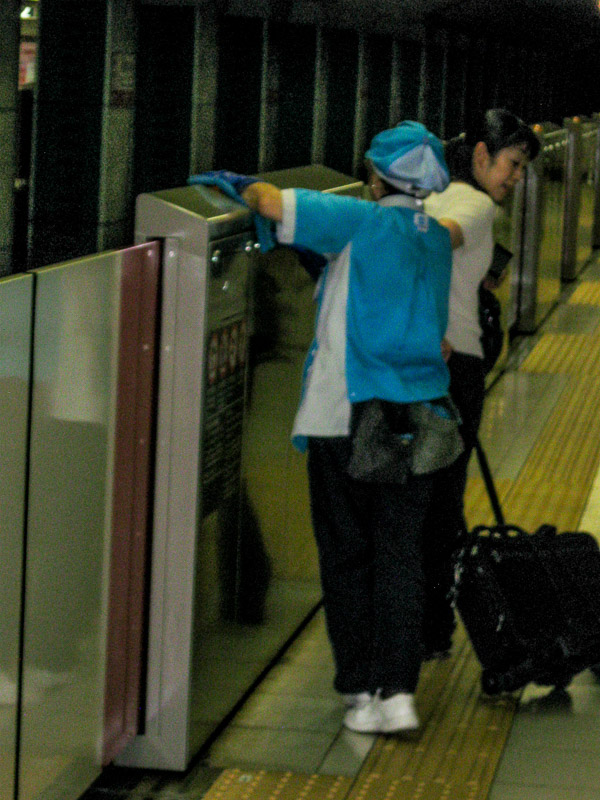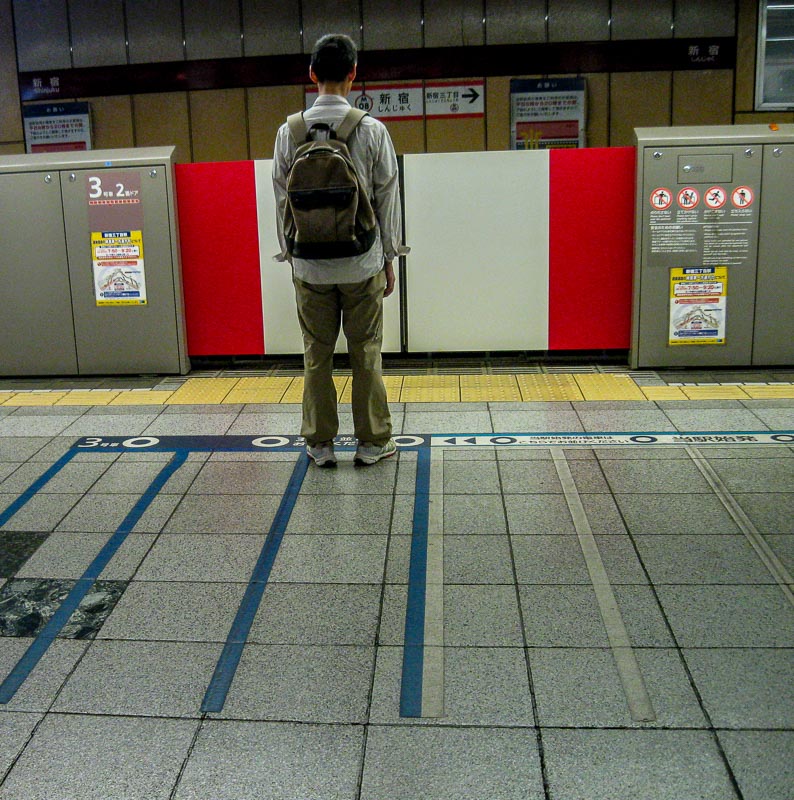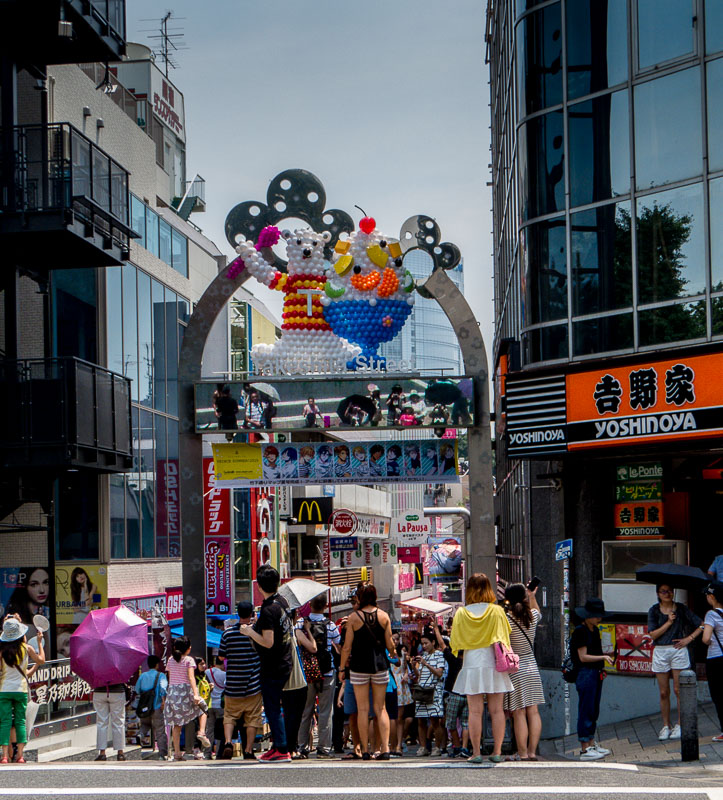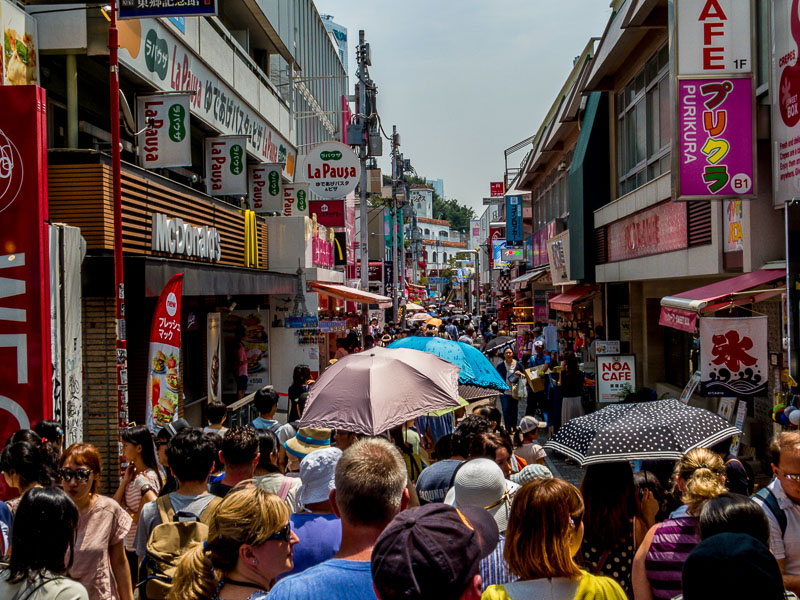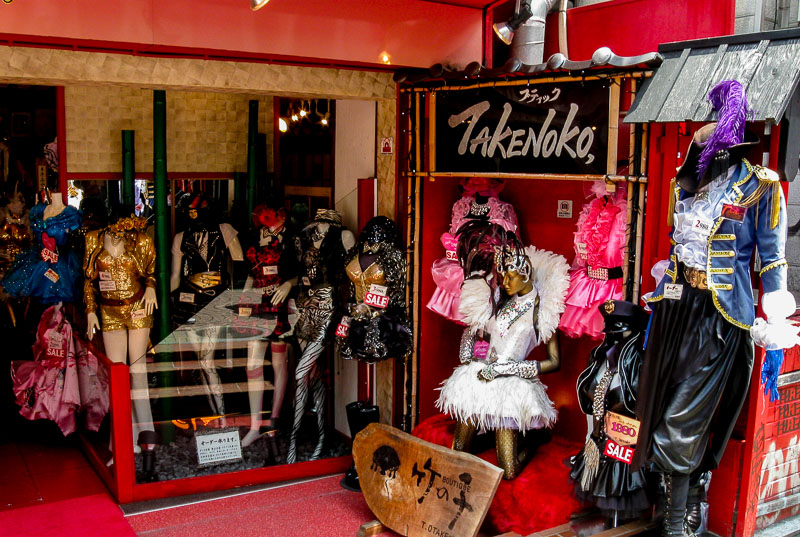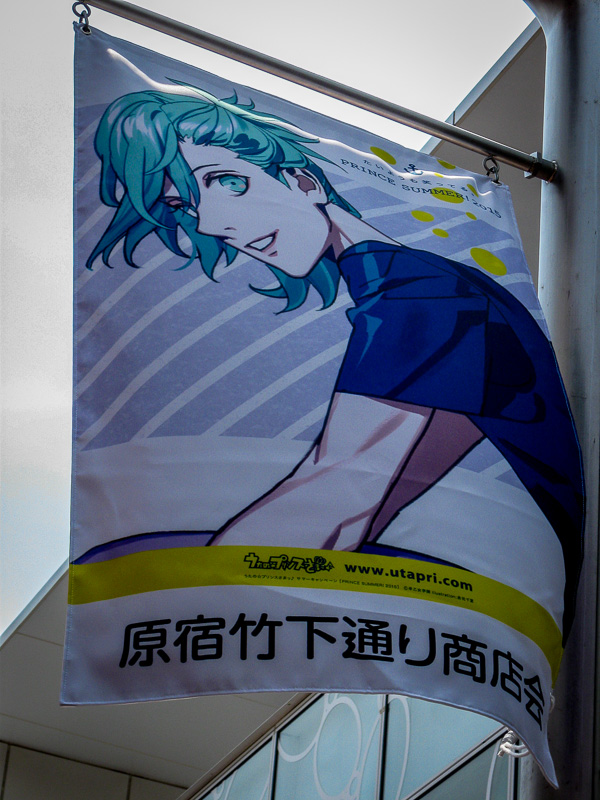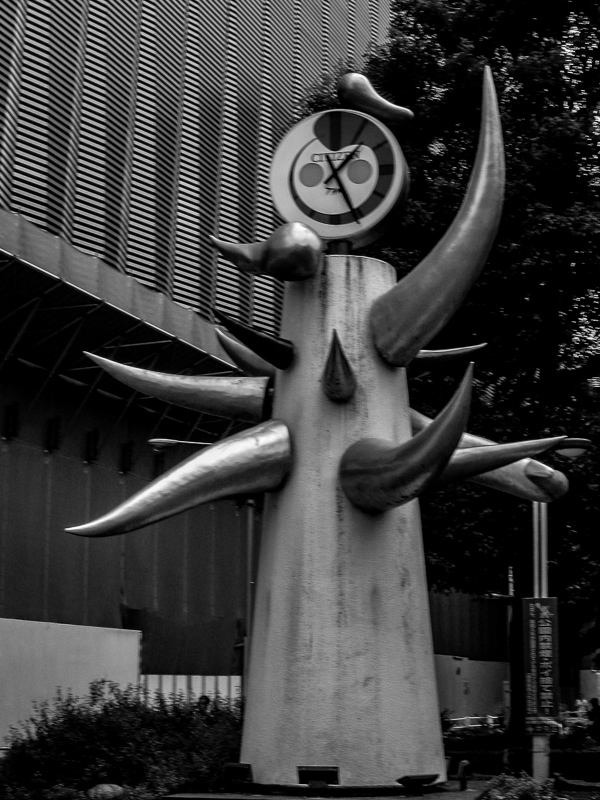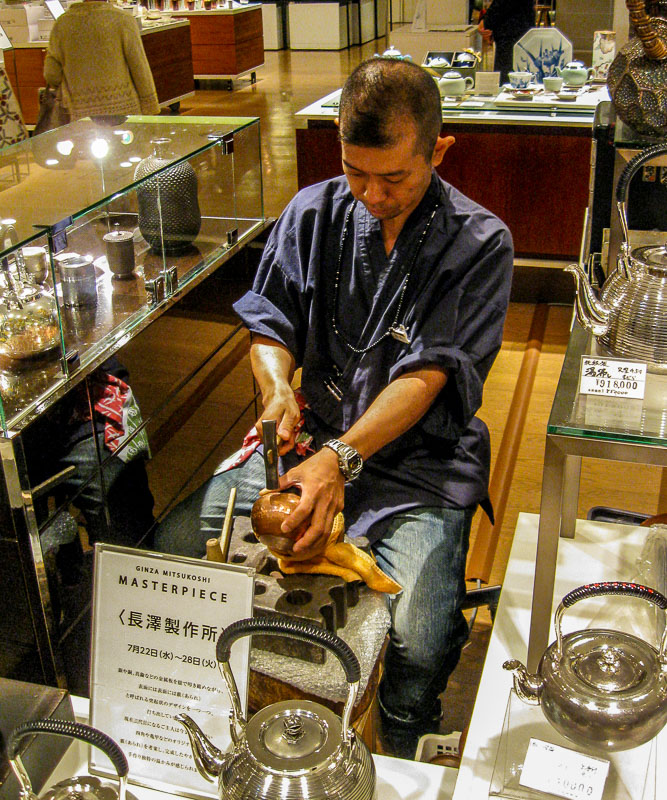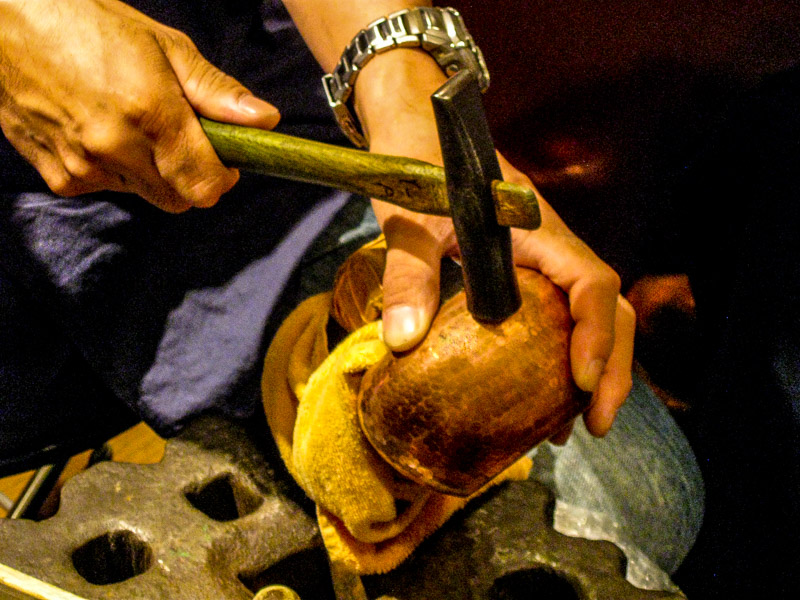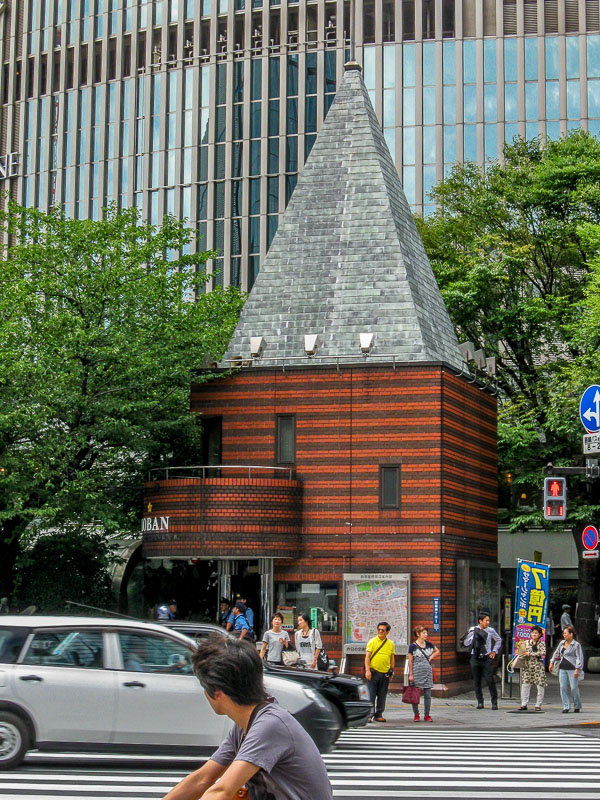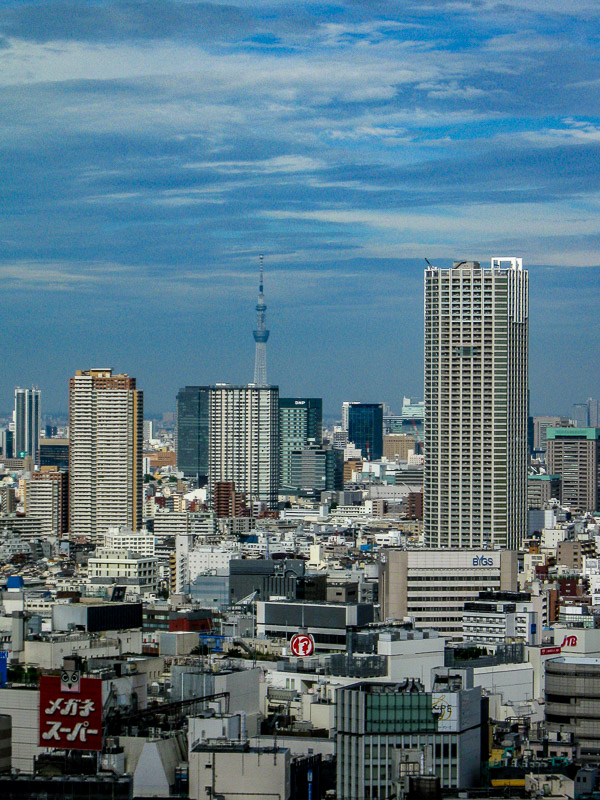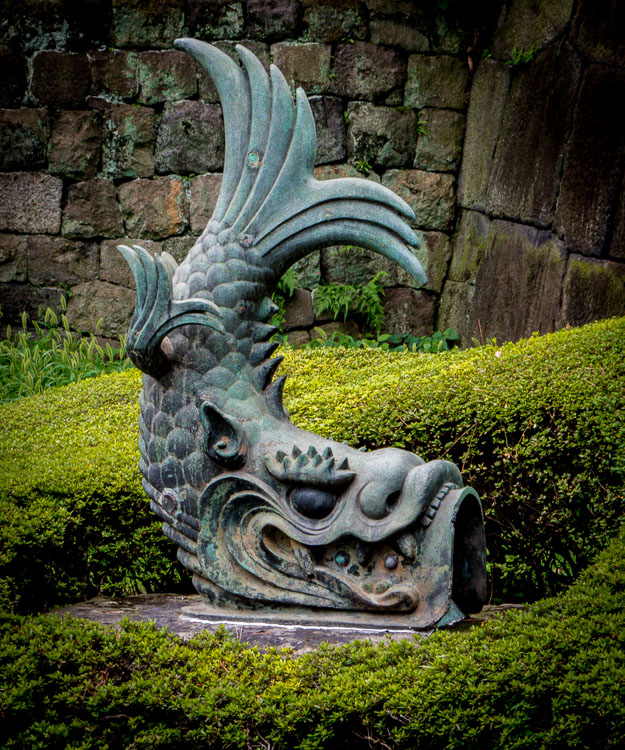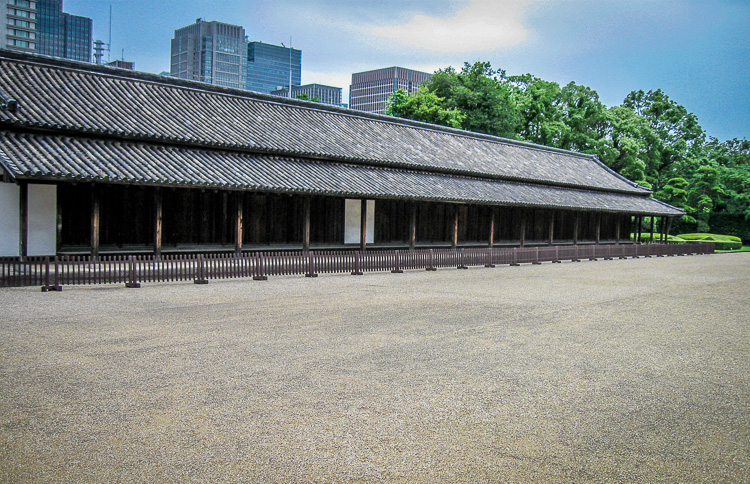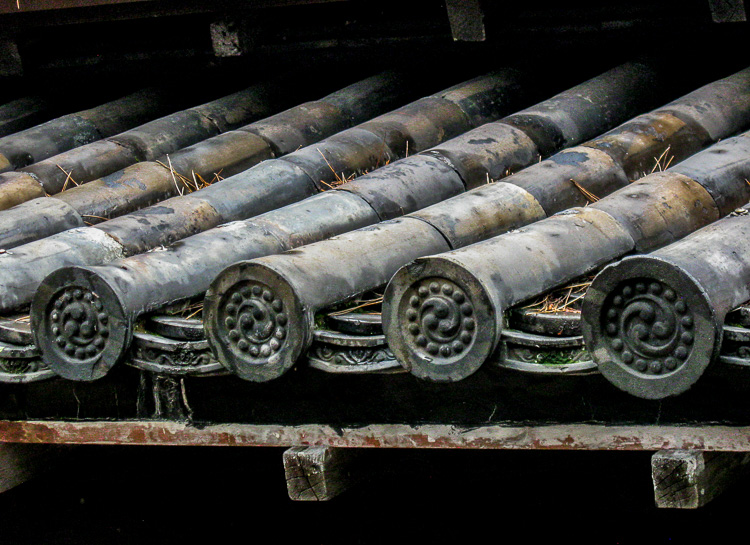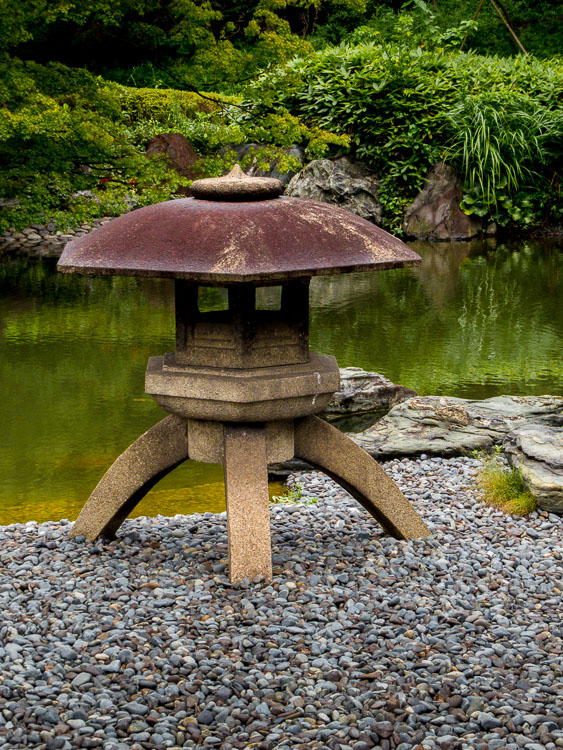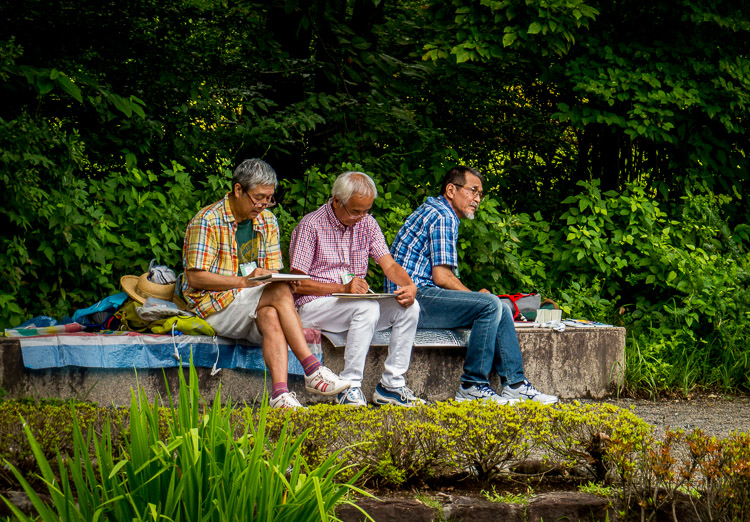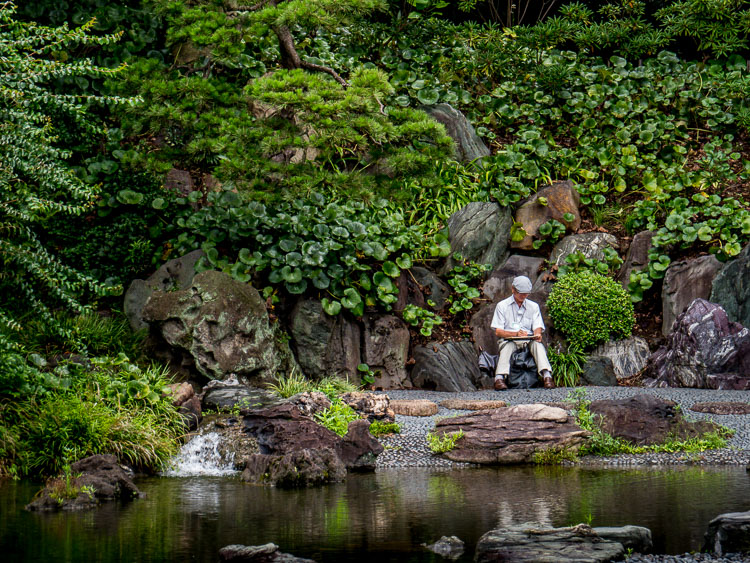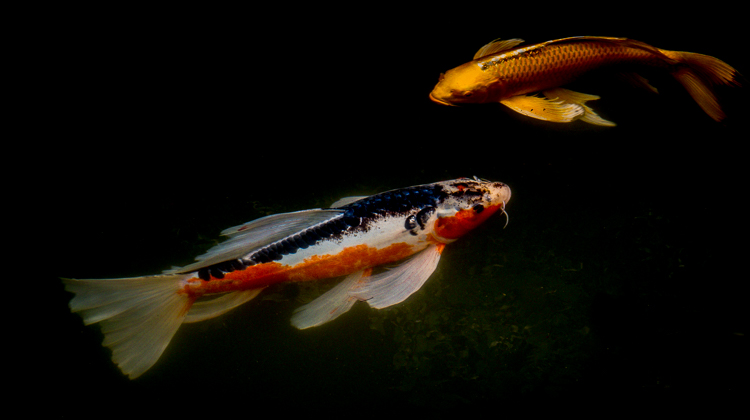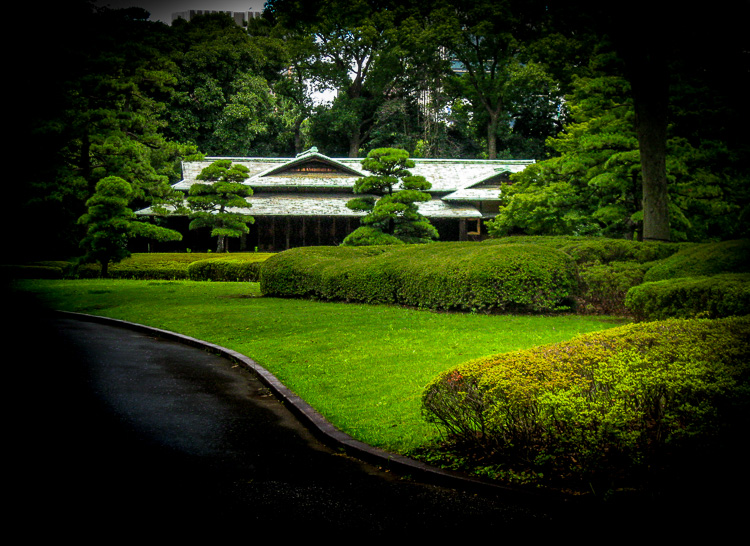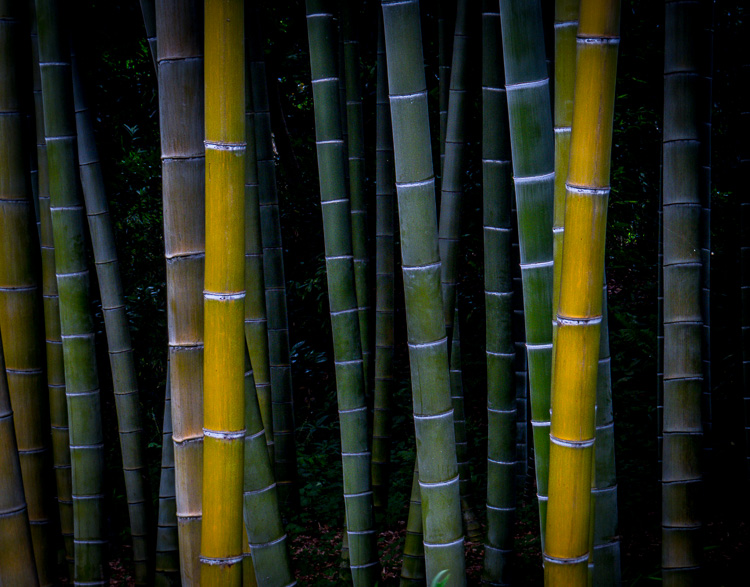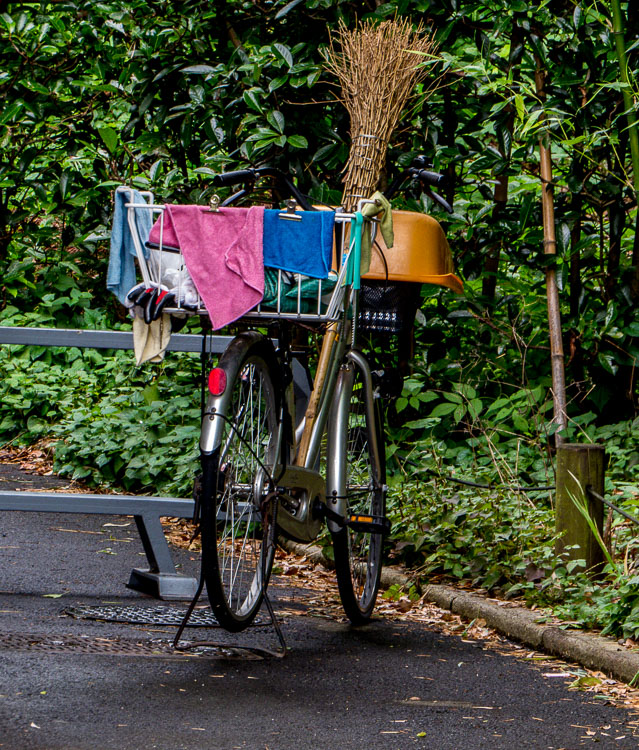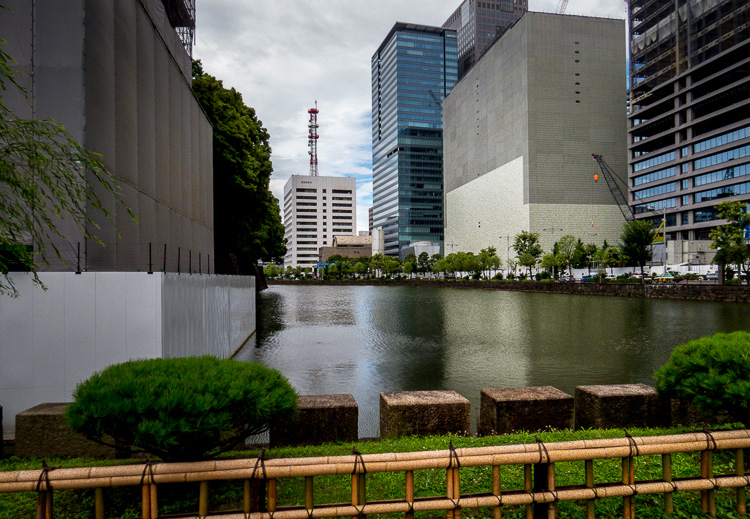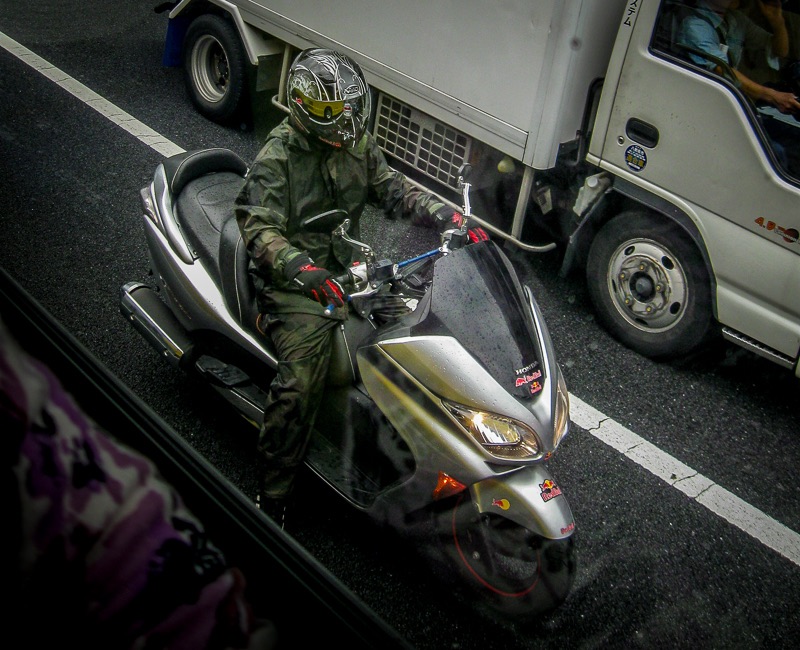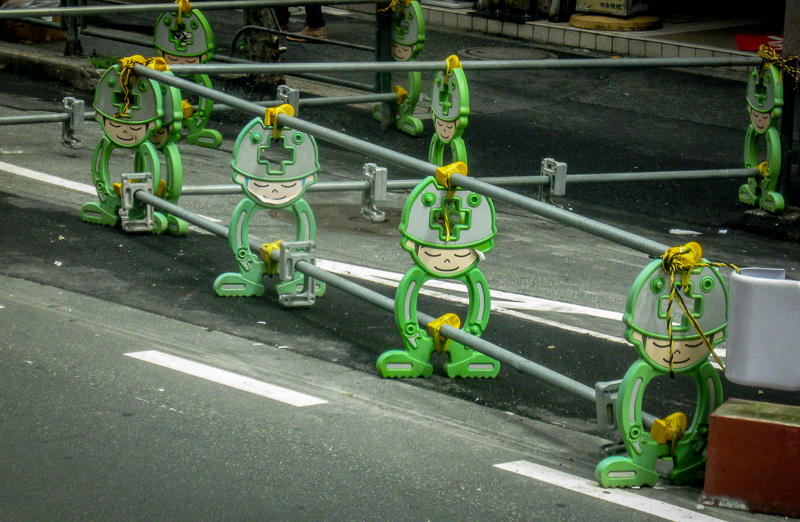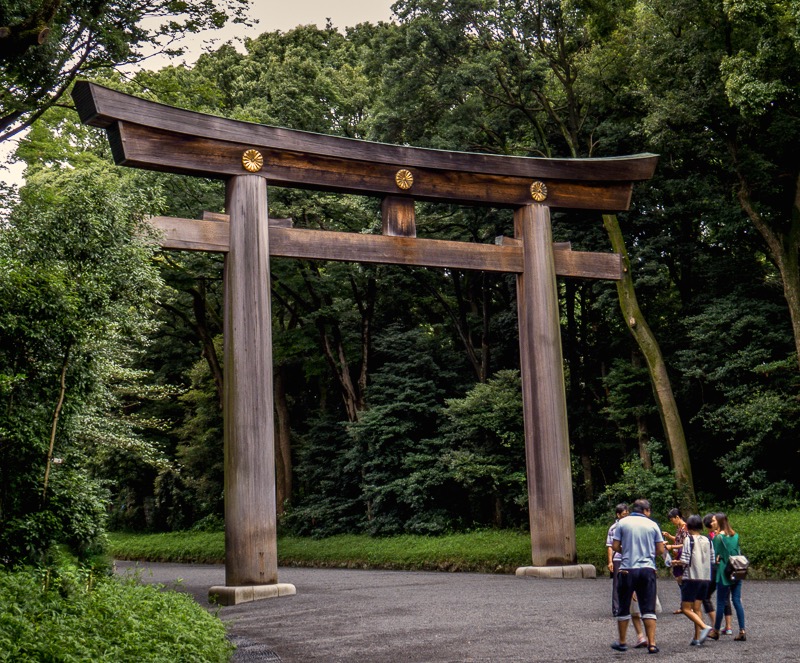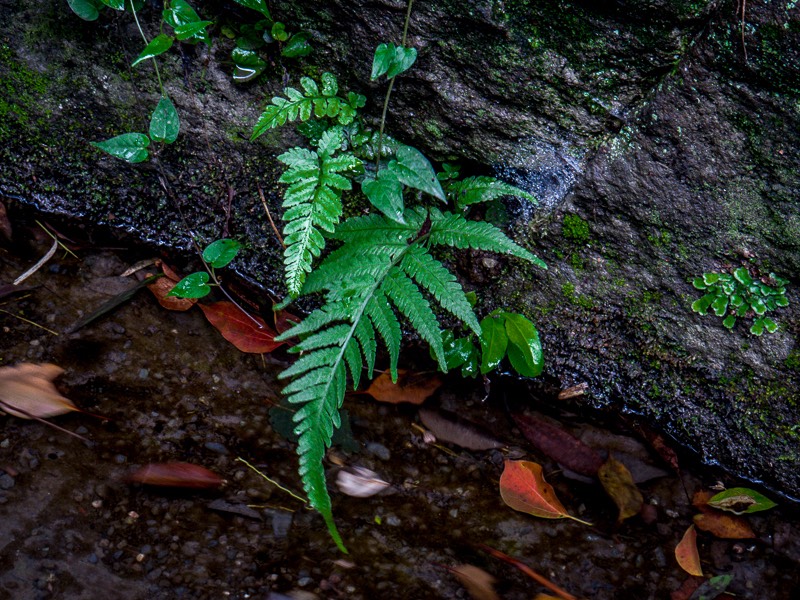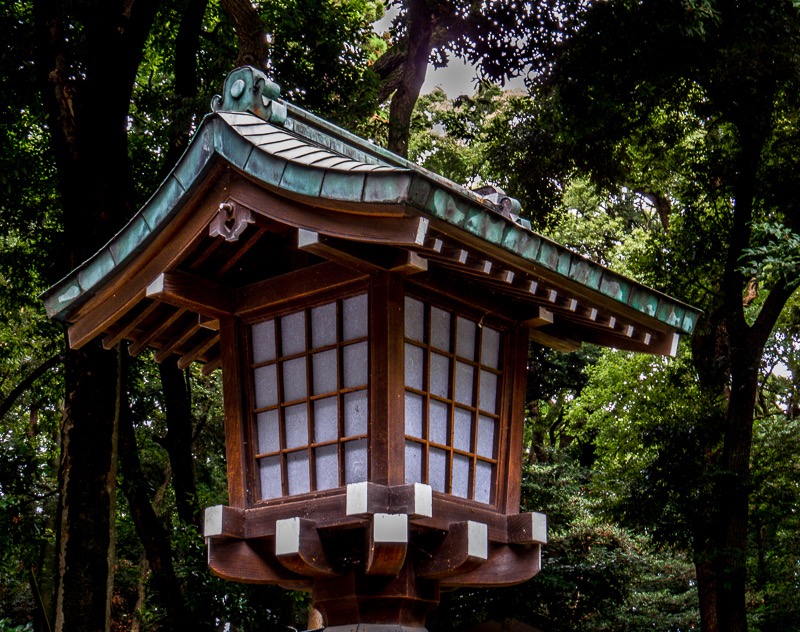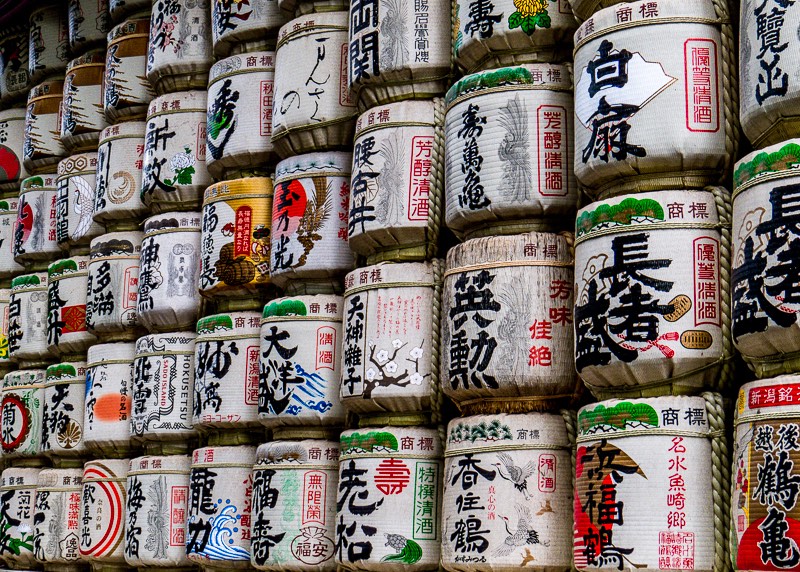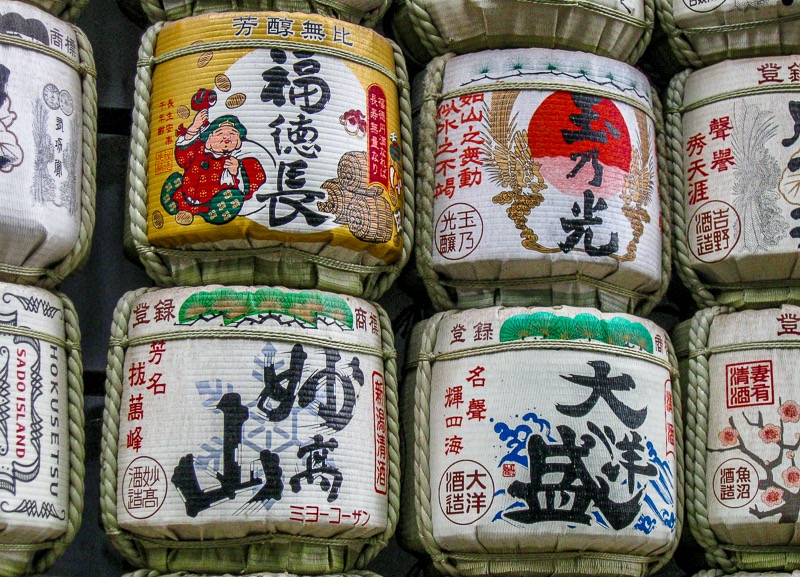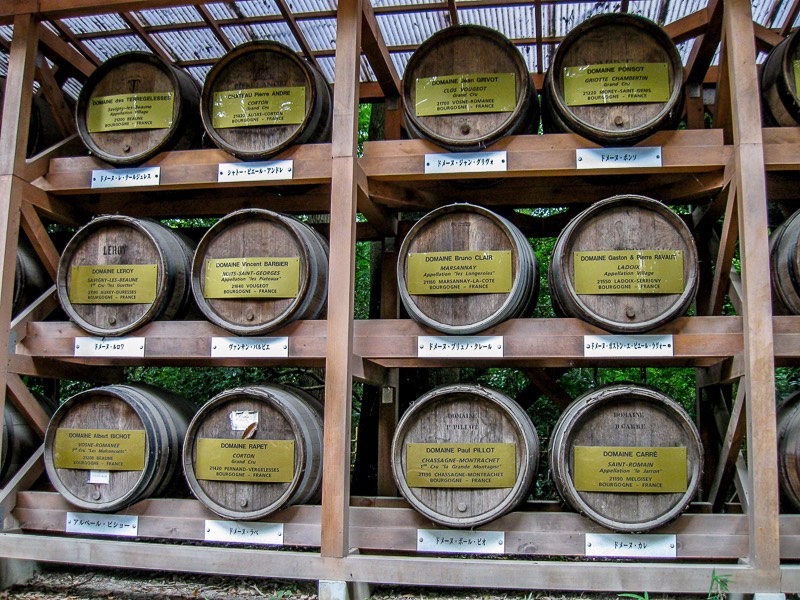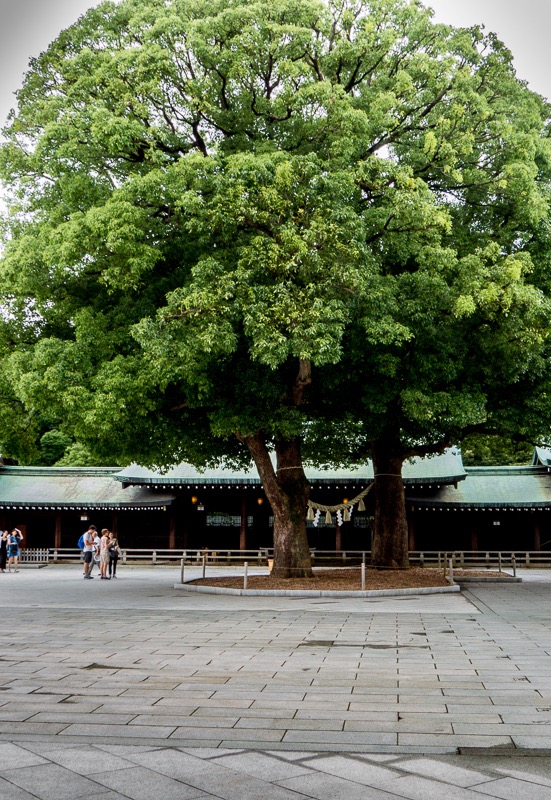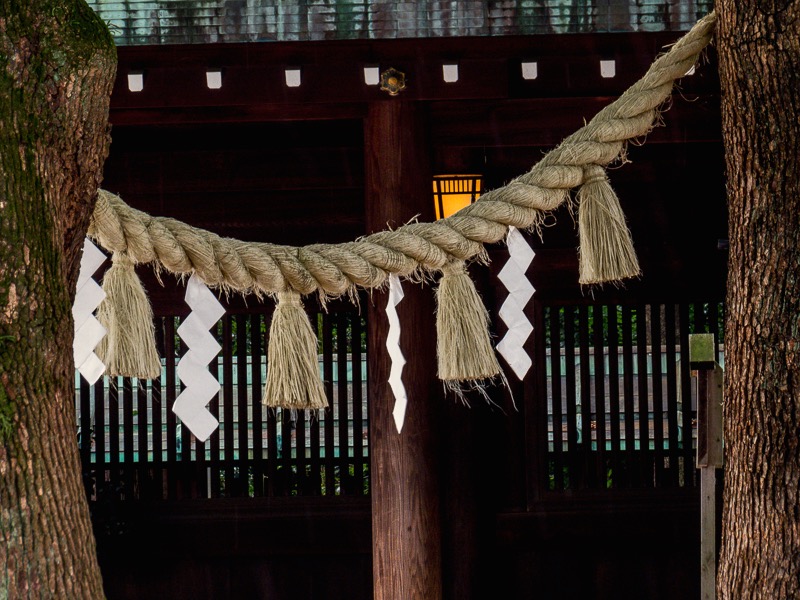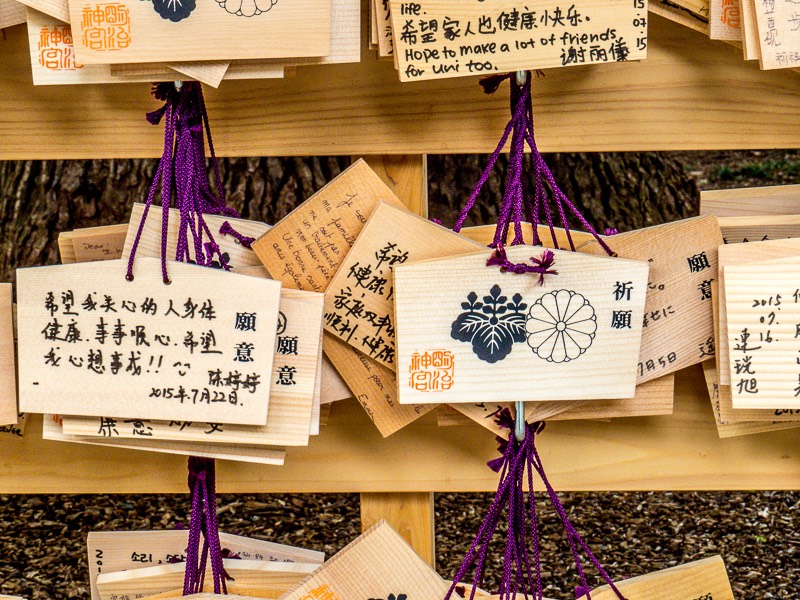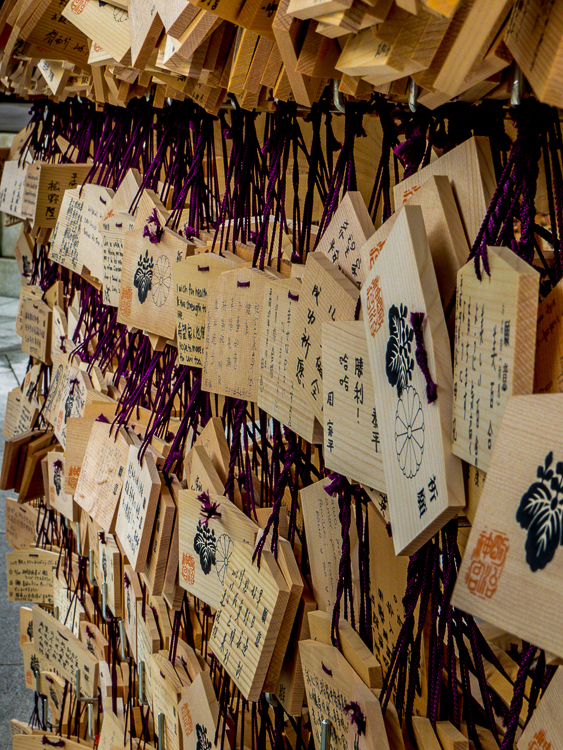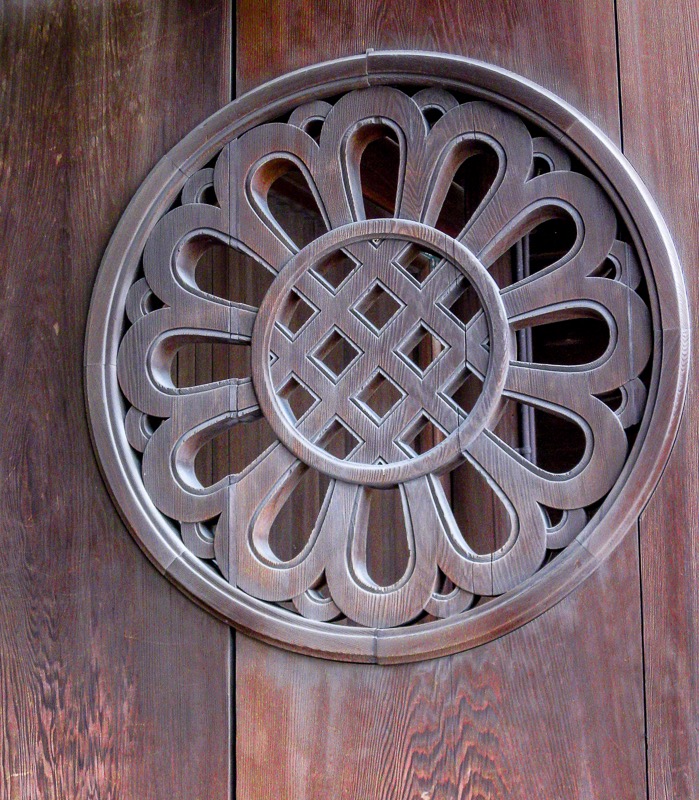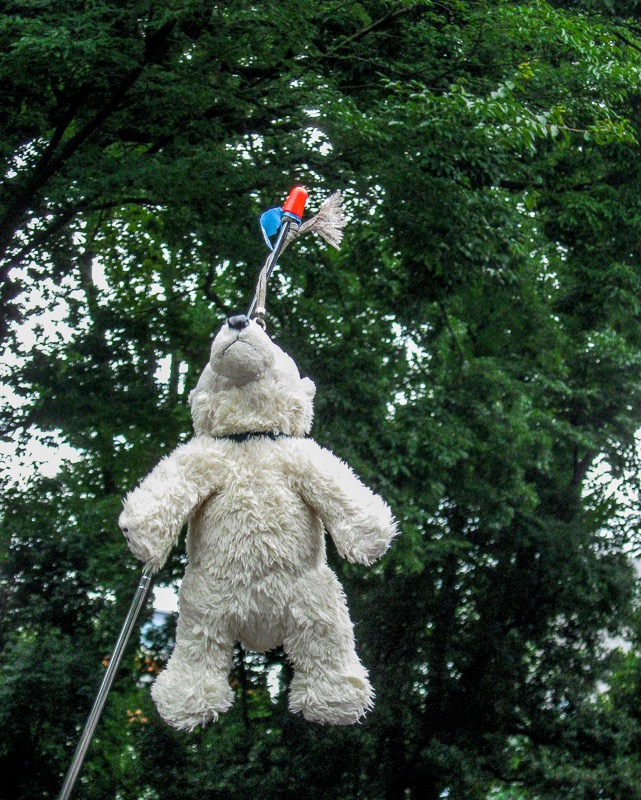Naturally, we were interested in seeing other sections of the city so once again, we made our way “downtown” to the Ginza area where some decorations from the Tanabata Star Festival were in evidence.
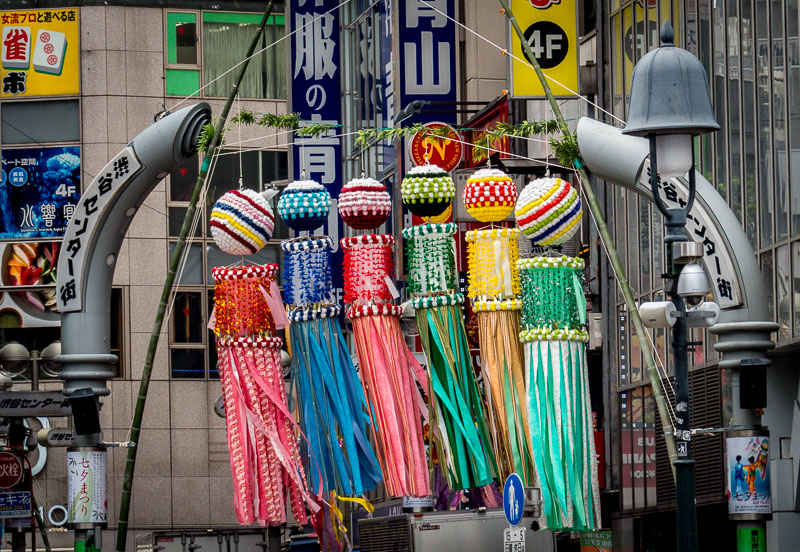
Our group remained intrigued by the large street crossing at Shibuya Station (reportedly the third busiest station in Tokyo and sometimes noted as the world’s busiest street crossing*) which hosts crowds waiting to cross in many different directions.
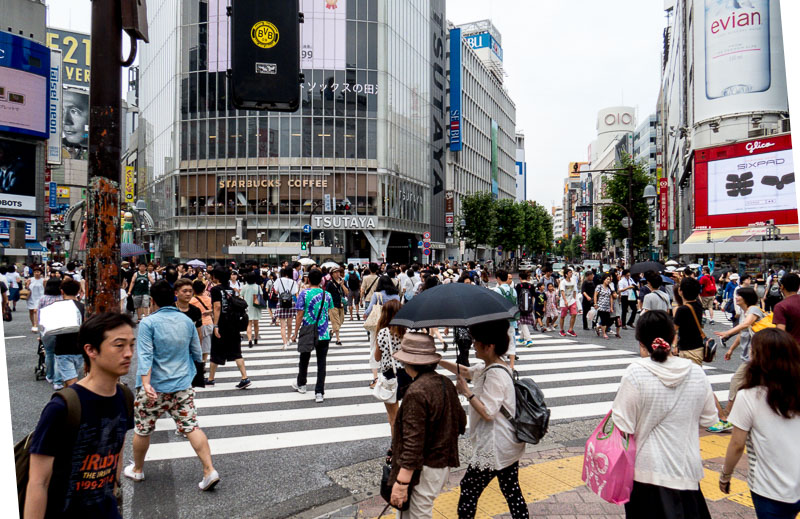
Shibuya Station Interesting Note
There is an underground river running under the station, to the east and parallel to the JR tracks. Unlike most other Japanese department stores, the east block of Tokyu department store (which constitutes the east exit of the station) does not have retail space in the basement because of this. An escalator in the east block built over the river stops a few steps above floor level to make space for machinery underneath without digging. Rivers are deemed public space by Japanese law, so building over one is normally illegal. It is not clear why this was allowed when it was first built in 1933. [emphasis mine ]
(Article based on Go Japan article/Wikipedia and used under the GNU Free Documentation License
As we watched the crowds, we saw that umbrellas were often used as parasols to shield the sun.

Below is an elevated view from inside Tokyu department store.

Also at the Shibuya Station is a park-like area where people can sit and rest in a relatively shaded area.
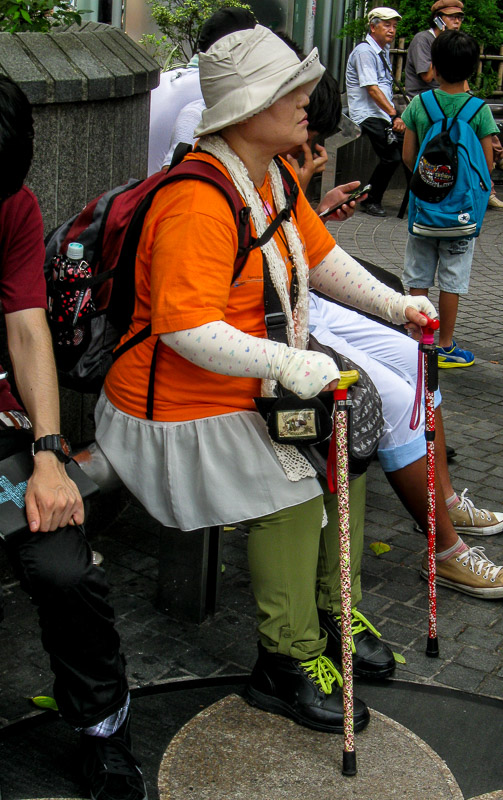
This park, however, is noted more for a famous statue of a dog. Hachi (Hachikō) was a very loyal Akita who so loved his owner that even after the death of his master, he remained vigilant for his return at this station each day. The people of Japan were so impressed with this display of loyalty, they erected a statue to honor his spirit.
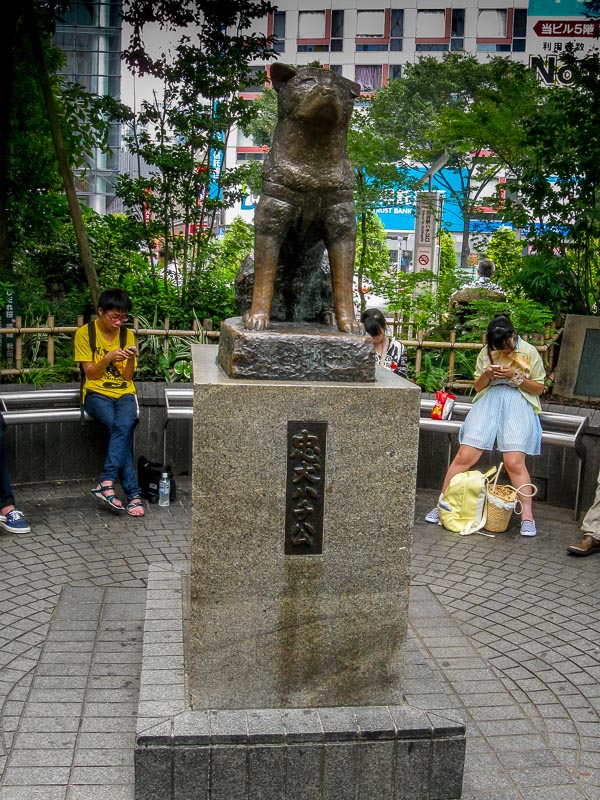
You can read more about the story of Hachi at Wikipedia.
There is also a movie based loosely on the story, Hachi: A Dog’s Tale (2009)
Shortly after our stop at the crossing, we headed for the Shinbashi, district of Minato in Tokyo where we came across the curious Nippon TV Tower Building made so by the ornate sculpture(below) attached to its side. It may be difficult to determine what this is, but the Nittere Ohdokei is the world’s largest animated clock.
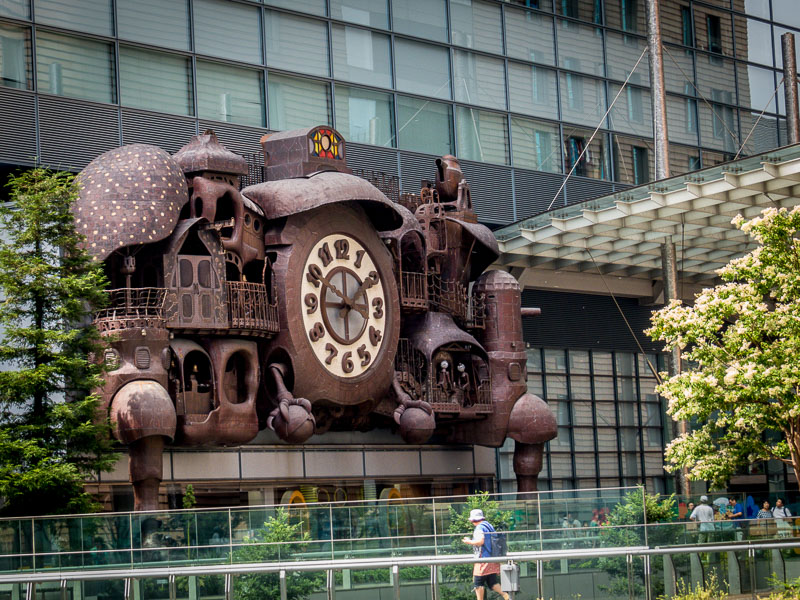
Below is a YouTube Video of the animation:
Another short walk brought us our third city area garden, the Hama-rikyu Gardens, but this one had a special treat in store!

The park was once an active duck hunting pond which is commemorated by this statue.
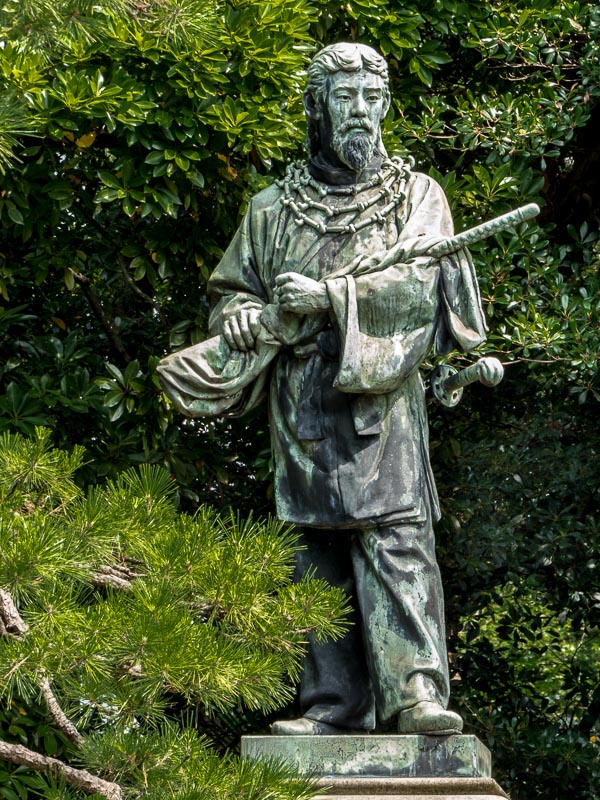
With this history one would expect interesting and beautiful water features.

As we strolled past the lawn and shrub areas…
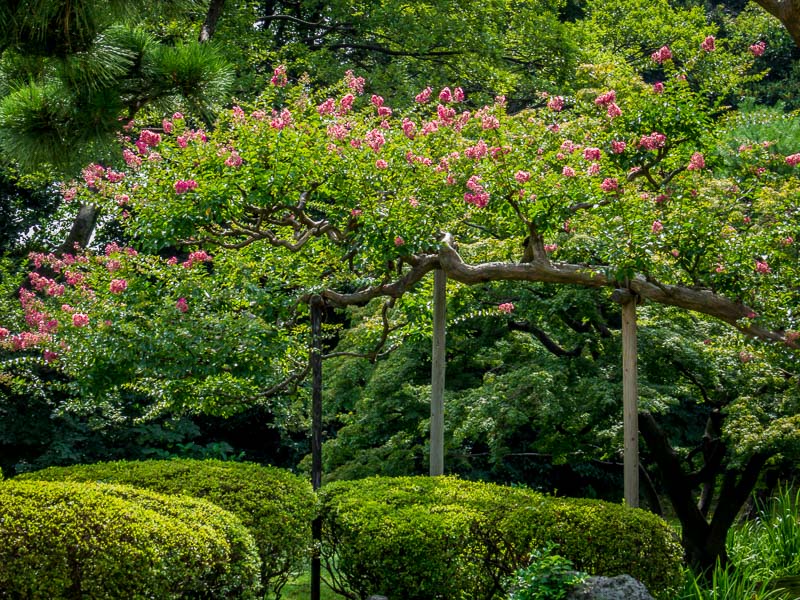
we could see “the treat” (a quaint old-style building) in the distance.
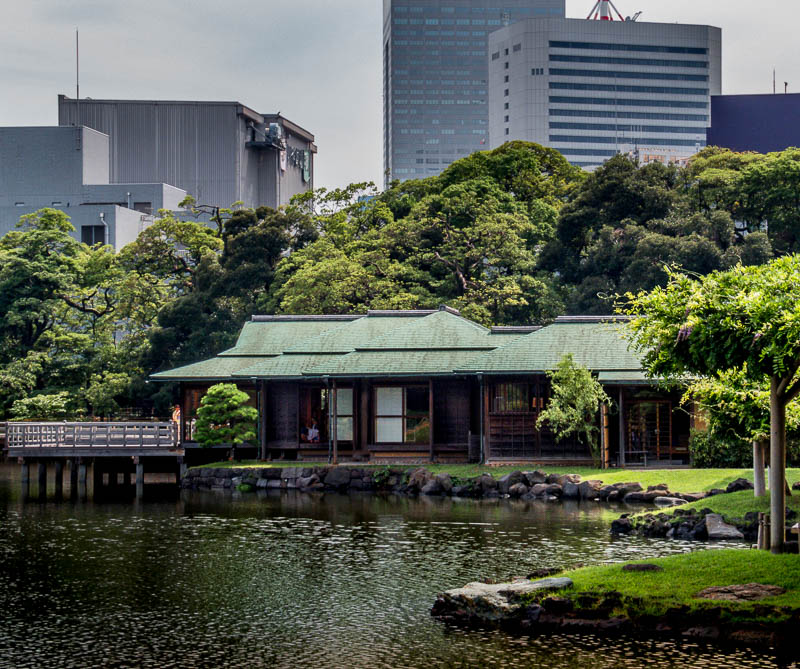
It was a traditional Japanese Tea House. Yama, our guide, explained the rituals associated with having tea in this setting.
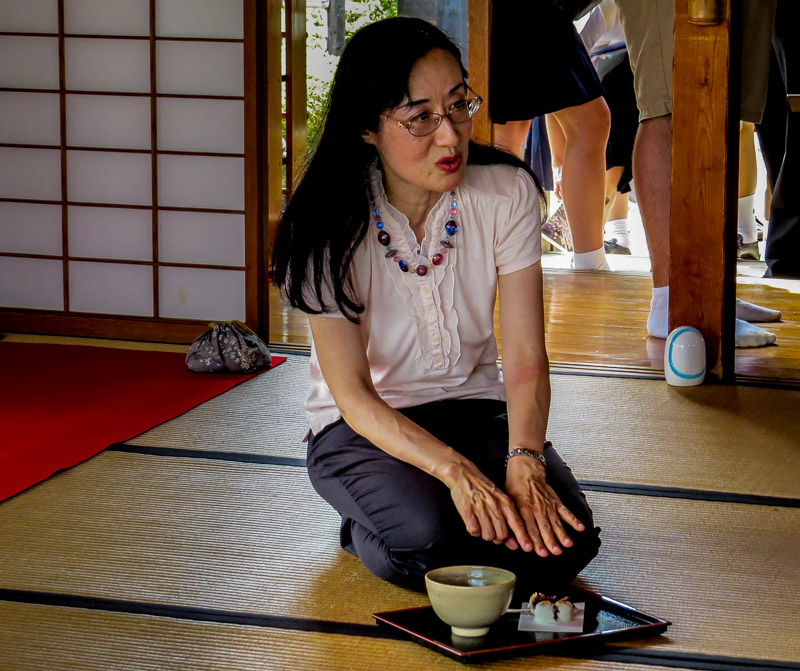
As you can see below, this was green tea, very green tea!
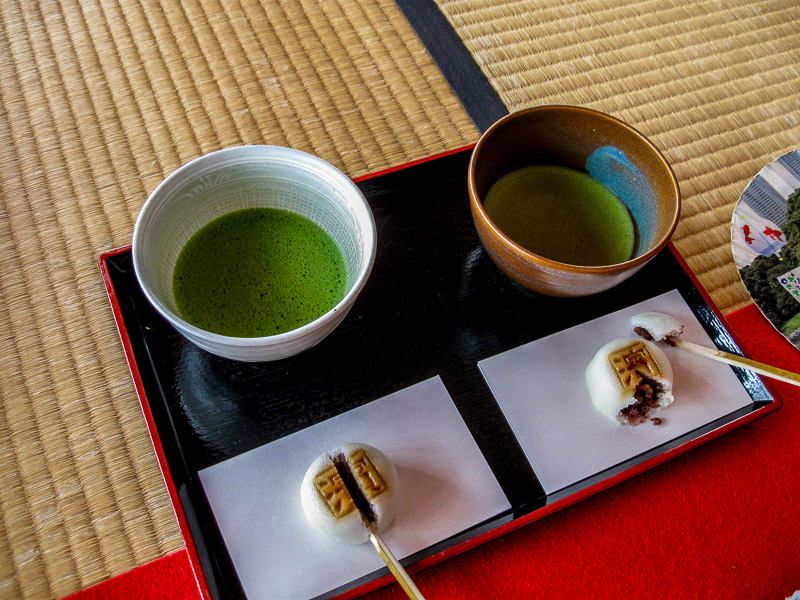
The tea was not bitter, but it was far from sweet. The cake served with it, however, was very sweet and when eaten with sips of the tea, proved palatable although our western tastes were not accustomed to the nuances.
Some patrons dressed in a more traditional garb.
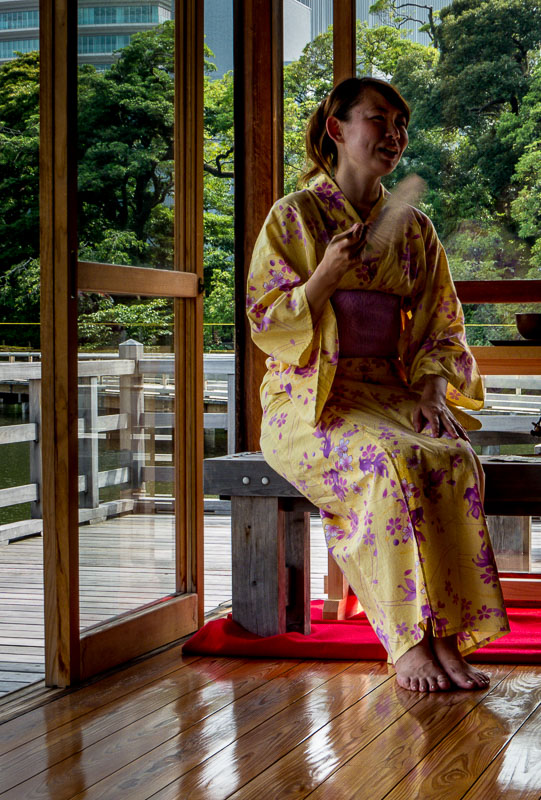

A view from the outside deck of the tea house was a reminder of the city location of this tranquil venue.
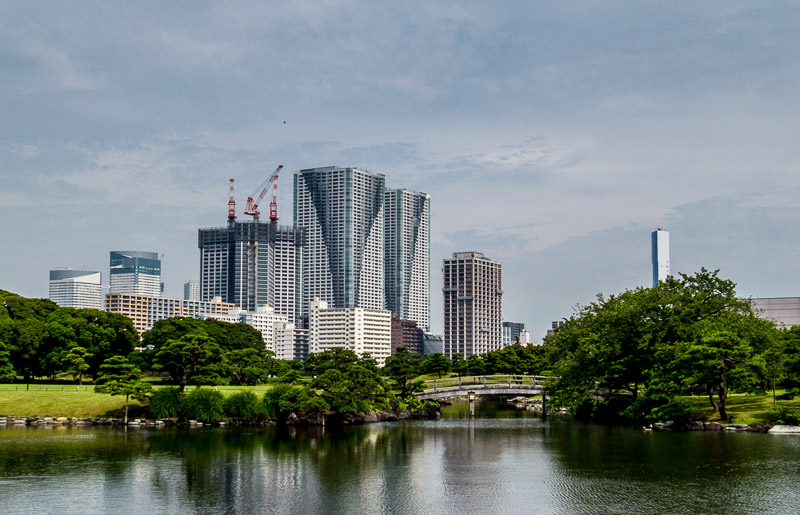
A very intriguing feature of the garden is this pine tree which was planted in 1709 and thus more than 300 years old.
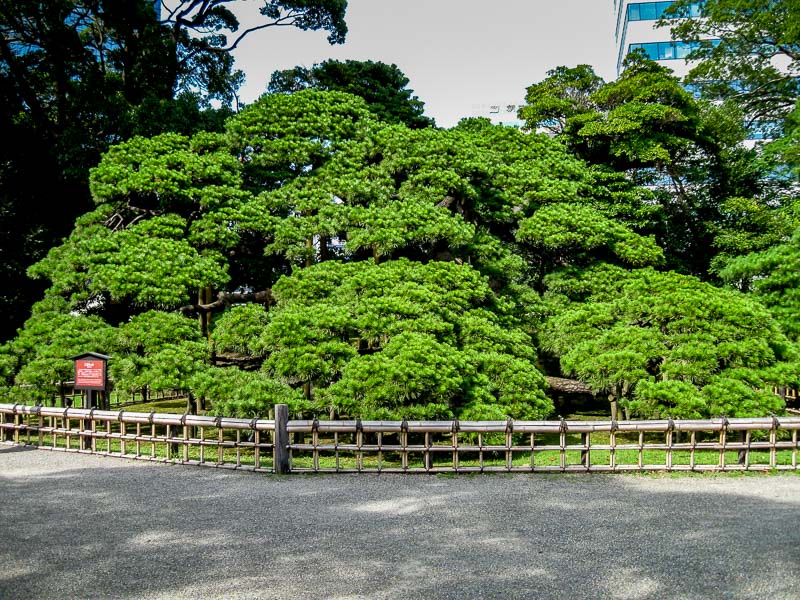
A short walk from the garden was a building I was very interested in examining, the Nakagin Capsule Tower designed by architect Kisho Kurokawa. This was a very innovative building for its time. (seen in the middle of the picture below with the stacks of cube-like blocks.)
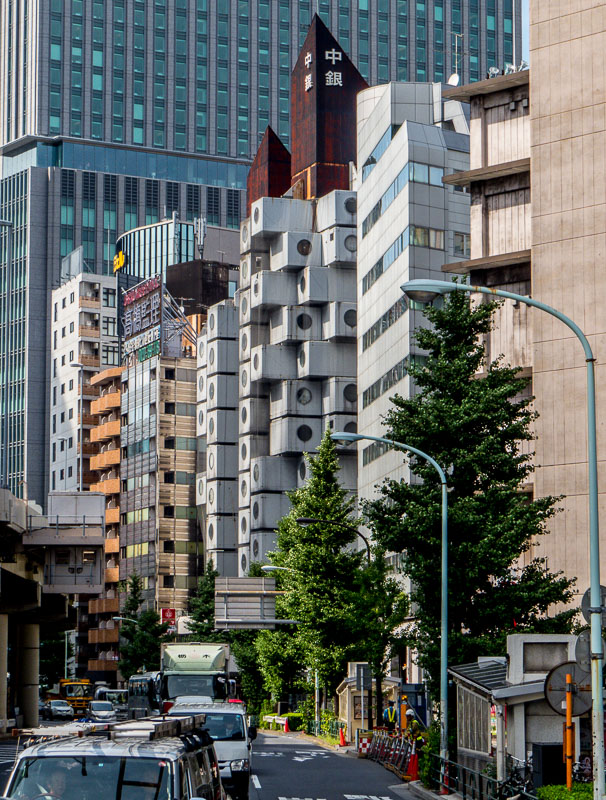
The building was designed to enable the compartments to be detachable, replaceable and connectable to accommodate various needs.

The building has been quarantined as there are asbestos and other structural issues although it was my understanding that it is still used by a few people.
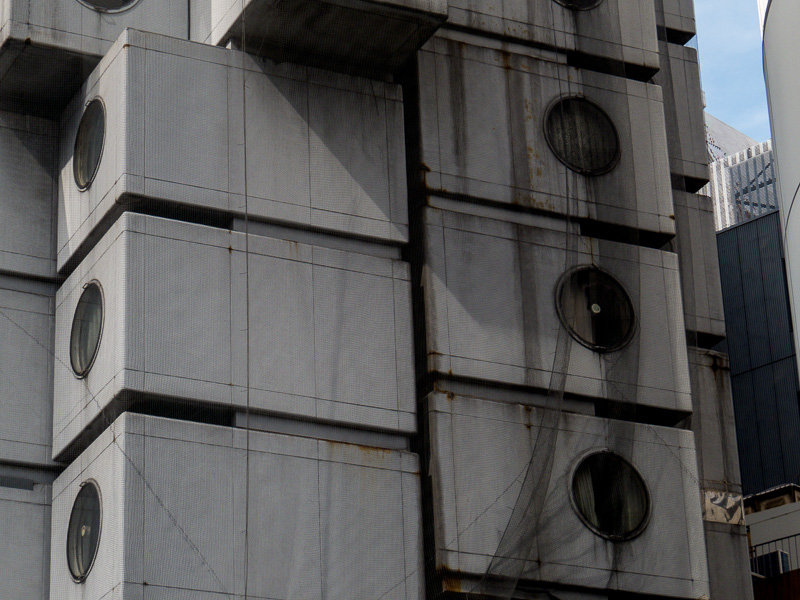
Tokyo has many new buildings that are beautiful as well as functional. The modern architecture provides a strong contrast to the older buildings and long history of the city.
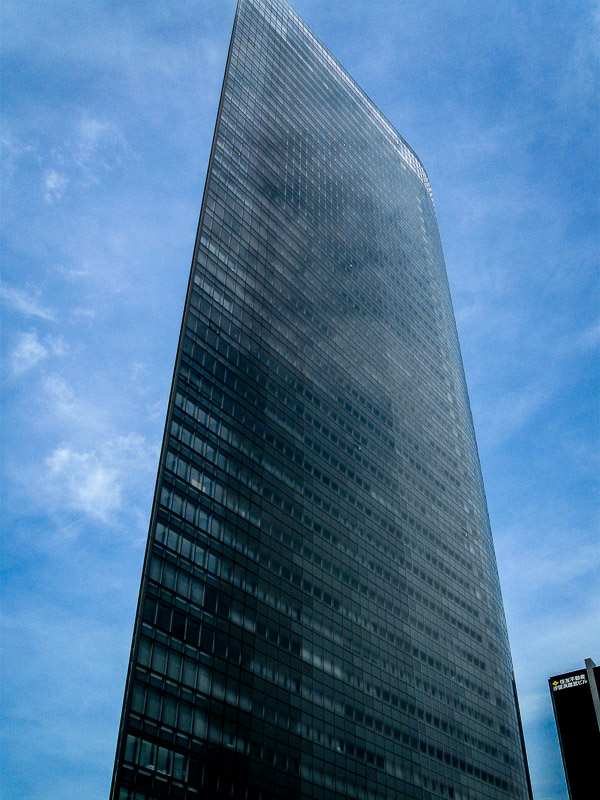
Of course what would a visit to a special place be without a souvenir or two (or even three)? So off we went to another city area for some shopping. The scene pictured below was typical.

Many of the young girls appeared to be more “dressed up” for a trip to the city area and often wore hats. This is another example of a small umbrella serving as a parasol.
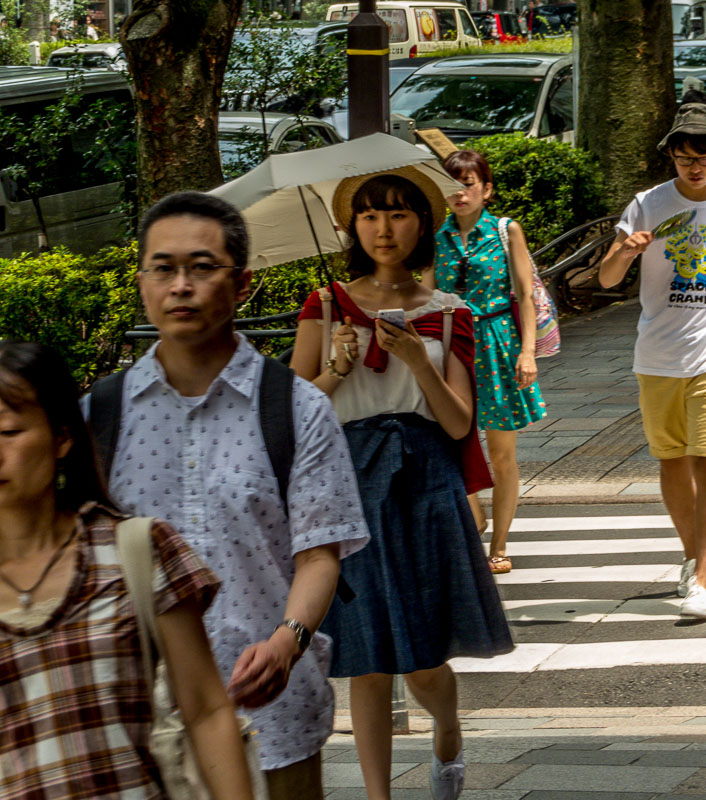
In preparation for our visit, we read that Japan had artistic sewer covers.
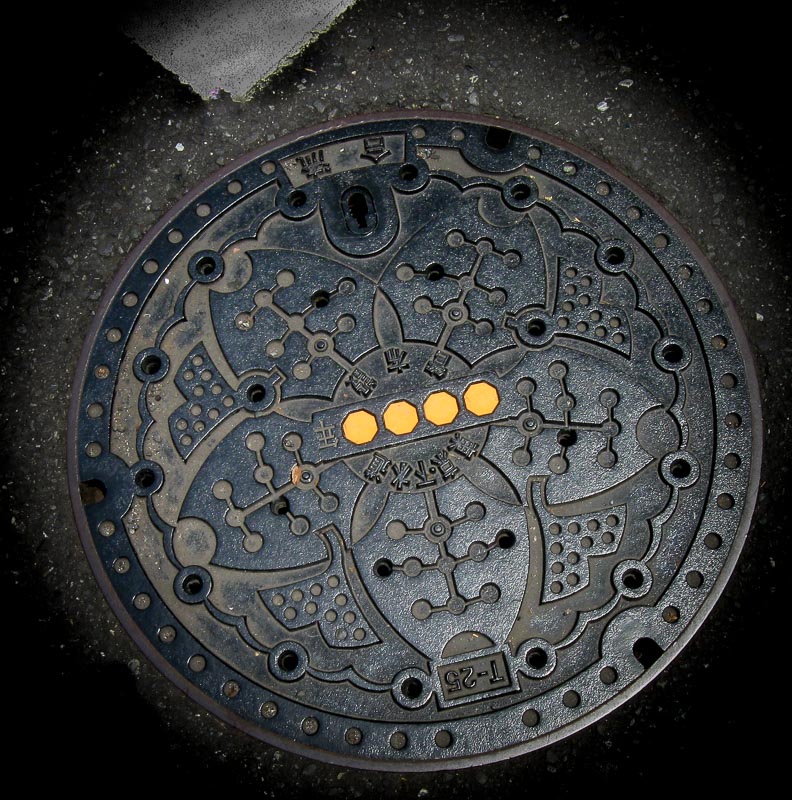
In America, we have so many commodities from Japan, that this sign advertising pork “raised from high quality grain from fertile American soils” appeared noteworthy.
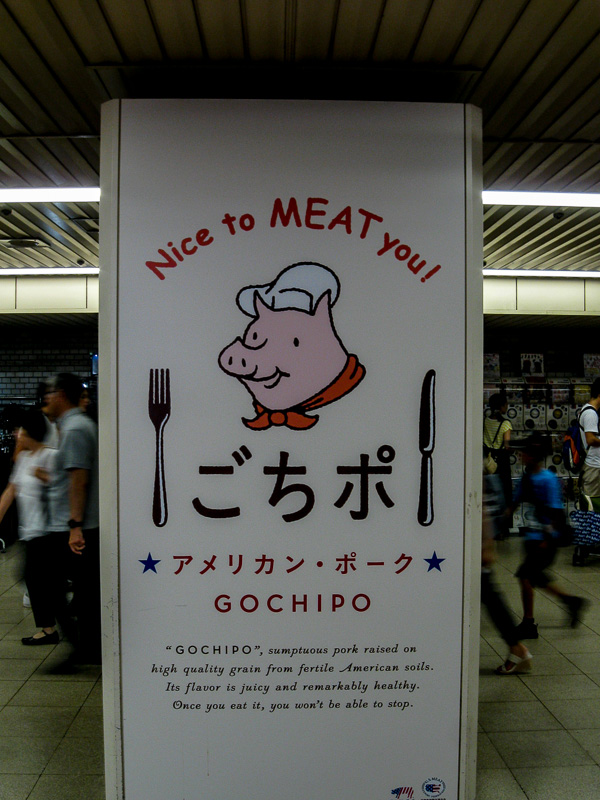
After a rest at the hotel and dinner, there was some exploration of the area to be had this evening of our last day in Tokyo!
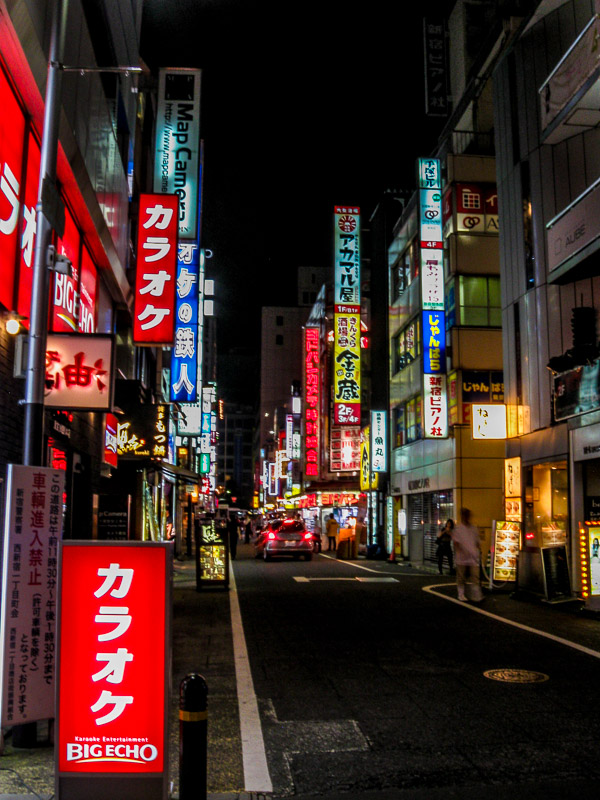
*http://www.timeout.com/tokyo/things-to-do/tokyo-facts-40-trivia-tidbits-to-wow-your-mind
Read more about our trip to Japan in 2015:
- Tokyo (2015) Day 1 – Meiji Shrine
- Tokyo (2015) Day 1 – Imperial Palace East Gardens
- Tokyo (2015) Day 1 – Sensoji (Asakusa Kannon) Buddhist Temple
- Tokyo (2015) Day 1 – Wrapping Up
- Tokyo (2015) Day 2 – Off To Mount Fuji And…
- Tokyo (2015) Day 2 – Hakone, Lake Ashi and Mt. Fuji
- Tokyo (2015) Day 3 – Part 1 – Shinjuku Gyoen Garden and Harajuku St.
JBRish.com originally published this post
